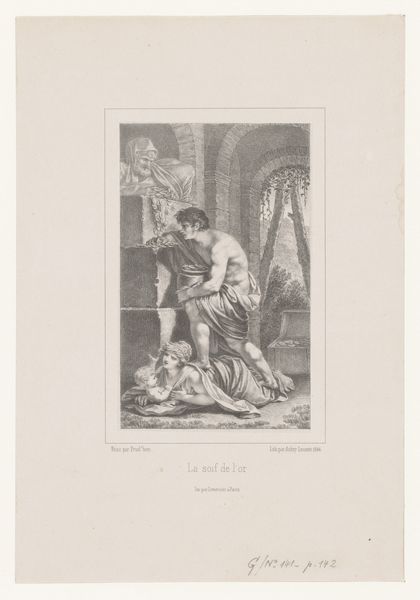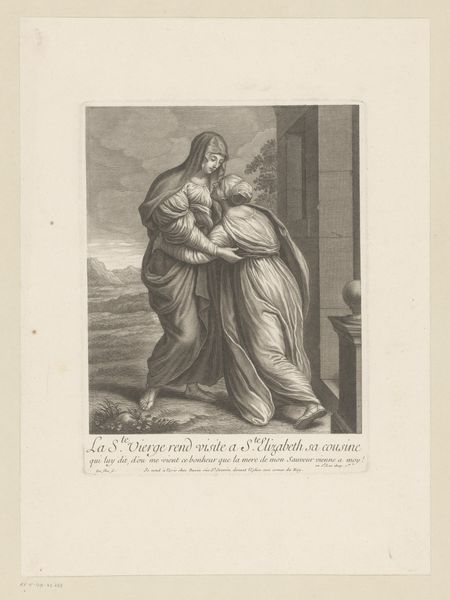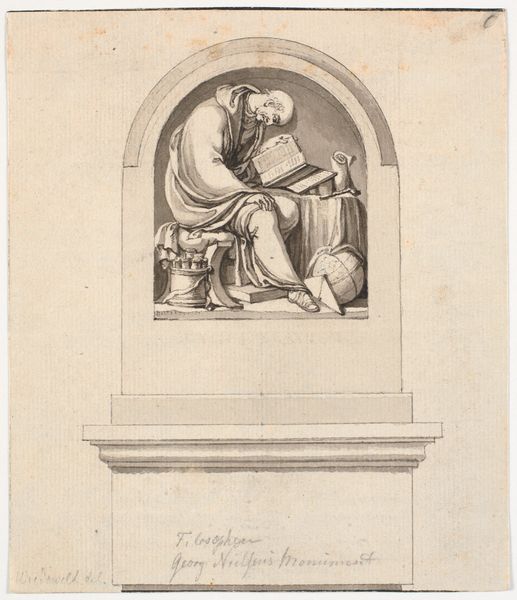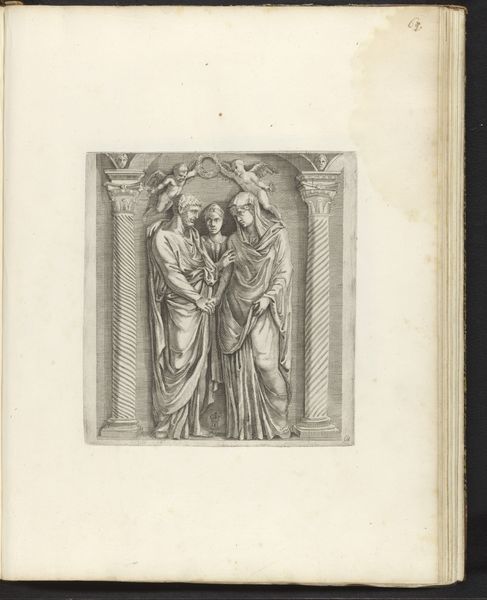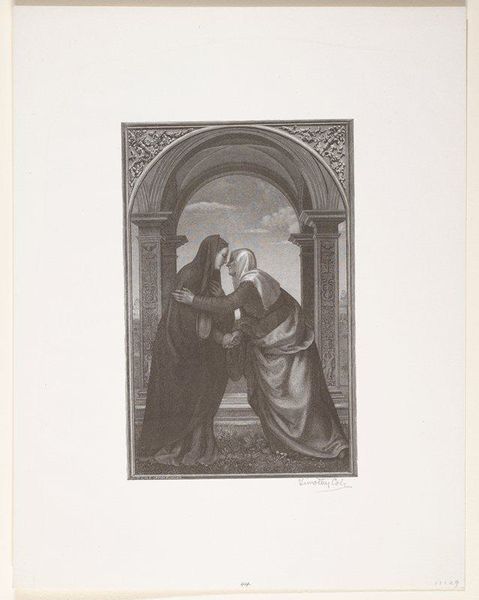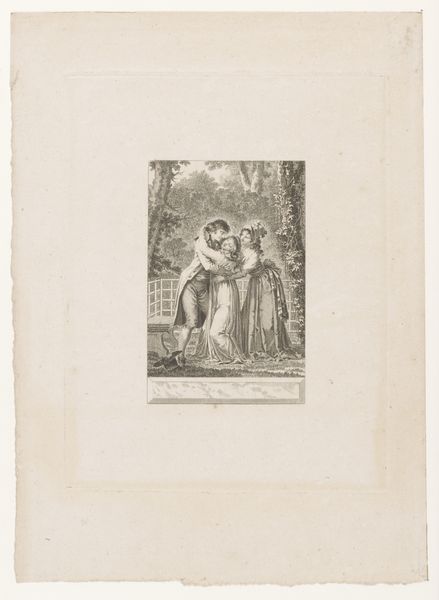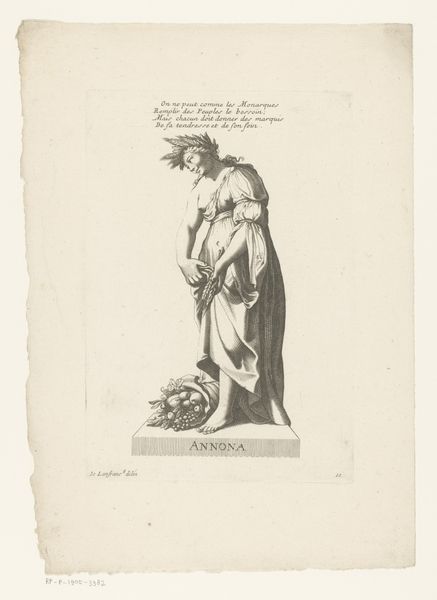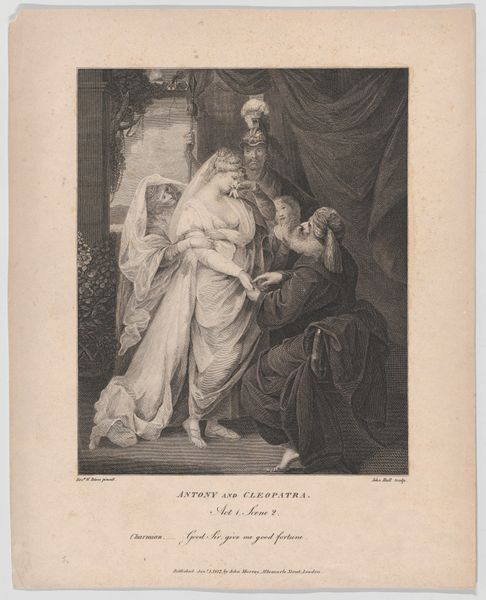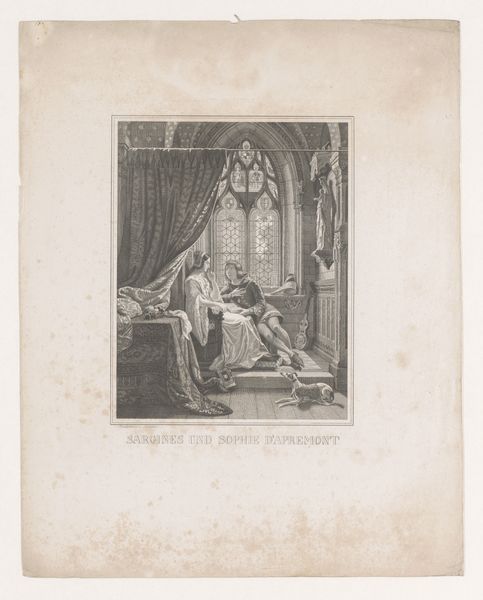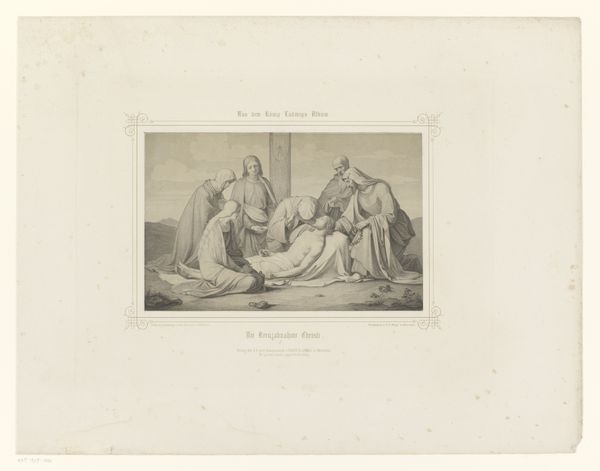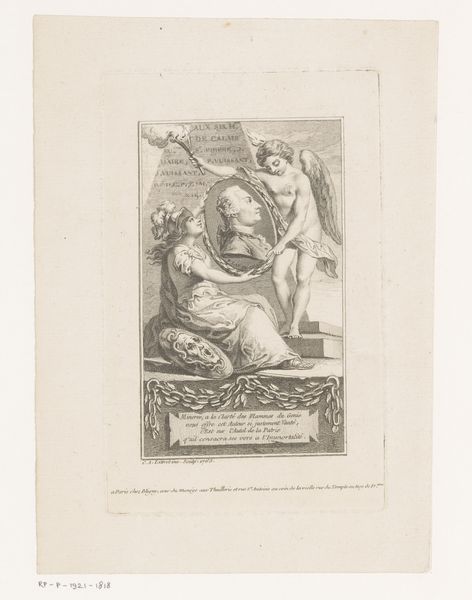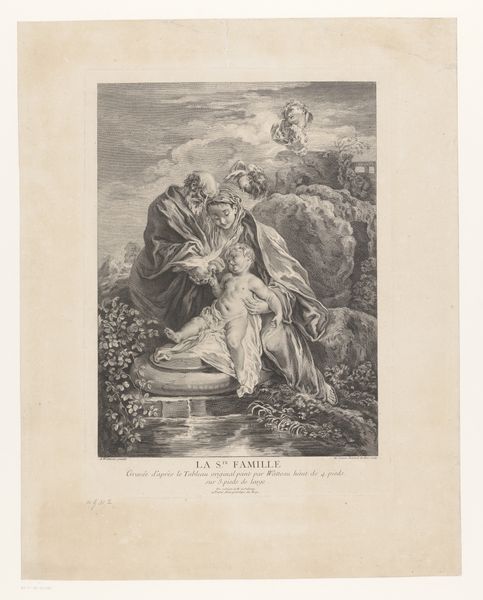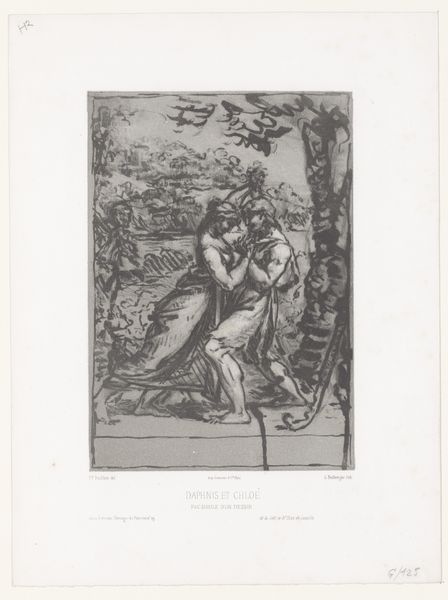
print, engraving
# print
#
classical-realism
#
figuration
#
line
#
history-painting
#
engraving
Dimensions: height 570 mm, width 444 mm
Copyright: Rijks Museum: Open Domain
Curator: This is Carl Friedrich Mayr’s 1850 engraving, “Meeting of Peter and Paul." It’s executed in a classical realism style. Editor: My first thought is how intimate it feels. These figures practically meld together. It's also striking that their faces are partially obscured. Curator: The obscurity of their faces actually aligns with certain theological debates surrounding representation and authority in religious contexts at that time. Both Peter and Paul are key figures, yet this choice refrains from lionizing them individually, perhaps emphasizing unity in early Christianity. The context is one of increasing religious questioning. Editor: Hmmm... but aren't they also kind of hiding? As if to suggest that their moment is somehow private? A little subversive? I wonder who else is excluded from this meeting? The figures below certainly seem preoccupied. Curator: Intriguing! Consider, too, the engraving's historical moment—1850 was a time of social upheaval across Europe. The desire for reform resonated within and without religious institutions. By representing this almost conspiratorial huddle, Mayr could subtly evoke such dynamics. Editor: It’s also the composition itself – how tightly they're framed by that decorative border, and that almost stage-like platform upon which they stand, creates this sense of separation from the earthly plane. Curator: Absolutely. The classical lines speak to an ordered world, even as the expressions hint at turmoil beneath the surface. Look closer: Do the bodies suggest vulnerability, and if so, what challenges do vulnerability pose? What are they whispering to each other, away from the gaze of the law or the threat of Rome? Editor: I think that's why this seemingly serene print holds so much emotional tension, even after all this time. Their very encounter challenges us to think who gets remembered and who history forgets, right? Curator: Exactly. Art allows such multilayered contemplation; It reveals our human experiences and how they transcend given contexts. Editor: Yeah, it whispers, when we expected a shout. I'll take the whisper.
Comments
No comments
Be the first to comment and join the conversation on the ultimate creative platform.
